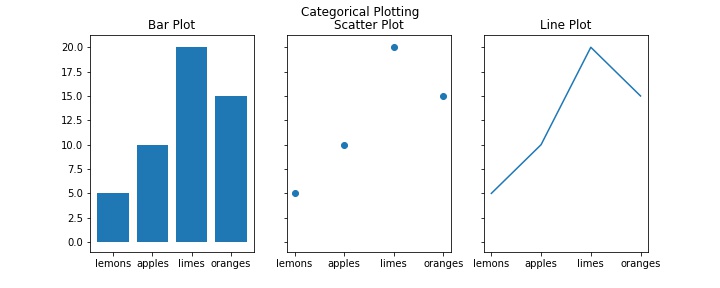A pyplot.subplot method adds a subplot to the current figure. You can add subplot using two ways.
1. subplot(nrows, ncols, index, **kwargs) 2. subplot(pos, **kwargs)
In the first syntax, three parameters nrows, ncols and index define the position of the subplot.
In the second syntax, pos is a three-digit integer, where the first digit defines a number of rows, the second digit define the number of columns, and the last third digit define an index of the subplot.
Different ways to use subplot:
plt.subplot(221) ax1=plt.subplot(2, 2, 1) # equivalent but more general ax2=plt.subplot(222, frameon=False) # add a subplot with no frame plt.subplot(223, projection='polar') # add a polar subplot # add a red subplot that shares the x-axis with ax1 plt.subplot(224, sharex=ax1, facecolor='red') plt.delaxes(ax2) # delete ax2 from the figure plt.subplot(ax2) # add ax2 to the figure again
Example
import numpy as np import matplotlib.pyplot as plt np.random.seed(12) x = np.random.rand(10) y = np.random.rand(10) z = np.sqrt(x**2 + y**2) plt.subplot(221) plt.scatter(x, y, s=80, c=z, marker=">") plt.subplot(222) plt.scatter(x, y, s=80, c=z, marker="+") plt.subplot(223) plt.scatter(x, y, s=80, c=z, marker='.') plt.subplot(224) plt.scatter(x, y, s=80, c=z, marker="*") plt.show()
This produces the following result:

. . .
pyplot.subplots
The pyplot.subplots create a figure and a set of subplots. It creates common layouts of all subplots.
Example
import matplotlib.pyplot as plt
data = {'apples': 10, 'oranges': 15, 'lemons': 5, 'limes': 20}
names = list(data.keys())
values = list(data.values())
fig, axs = plt.subplots(1, 3, figsize=(10, 4), sharey=True)
axs[0].set_title('Bar Plot')
axs[0].bar(names, values)
axs[1].set_title('Scatter Plot')
axs[1].scatter(names, values)
axs[2].set_title('Line Plot')
axs[2].plot(names, values)
fig.suptitle('Categorical Plotting')
This produces the following results:

. . .